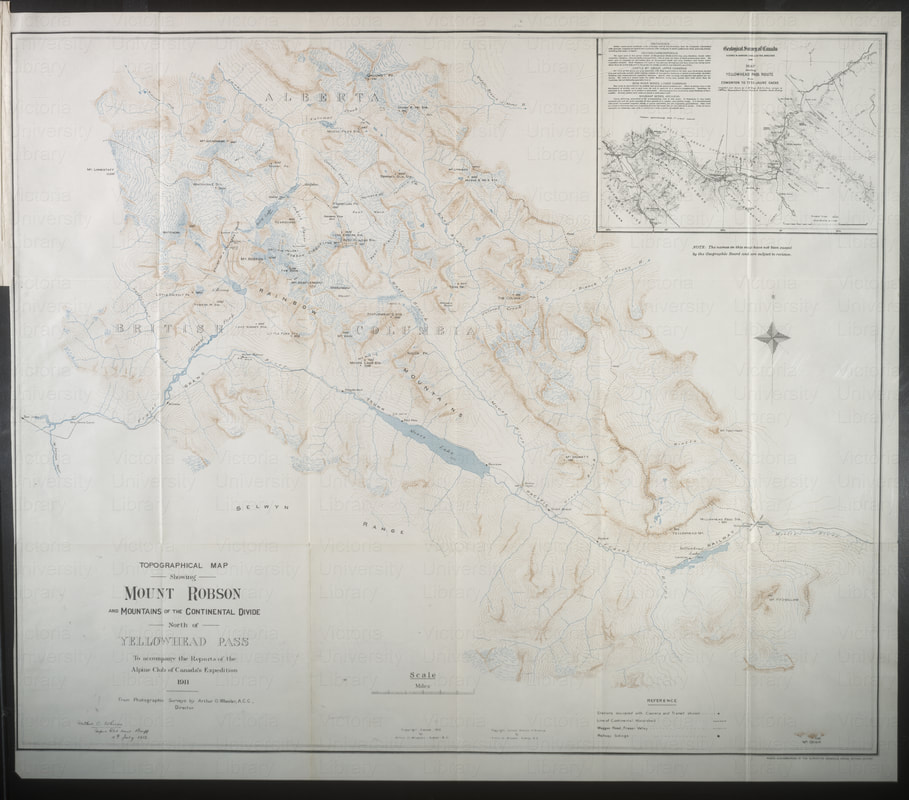Stations in the Mt. Robson area
Historic map from the 1911 Survey
|
Interactive Map of Stations in the Mt. Robson area
|
|
This is a copy of the full map produced from data gathered in the 1911 Survey. Click the map to enlarge it.
|
Click on a marker to display more information about the station.
Orange markers indicate stations with high resolution digitized historic and modern imagery. Purple markers indicate stations with high resolution digitized imagery - no yet repeated. Blue markers indicate known stations, but with as yet no digitized imagery - the images exist only on glass negatives. |
Classification Categories
The high resolution image pairs selected for in-depth analysis have been segmented into vegetation and land use categories. These categories are based upon the Vegetation Resources Inventory from the B.C. Land Cover Classification Scheme and are as follows:
The Vegetation Resources Inventory (VRI) using the B.C. Land Cover Classification Scheme (Version 1.3, 2002), along with Remote sensing and forest inventory for wildlife habitat assessment (McDermid et. al. 2009) were used to create the classification categories. Some condensing of VRI categories occurs in this study because oblique-photographs are used (photos taken from a high point looking out across the landscape at an oblique angle). The VRI does have finer grained category stages but they require othographic imagery (images taken from a high altitude looking down at 90 degrees) in order to be useful.
Guide to Individual Station Pages
|
Individual station pages present all of the image pairs selected for in-depth analysis. Each page contains the following information:
Questions to Keep in Mind while Exploring the Images
Each of the image pairs selected for in-depth analysis as well as other modern and historic images from the stations around the Mt. Robson area can be examined with landscape change in mind.
Questions to keep in mind when examining the images:
|













